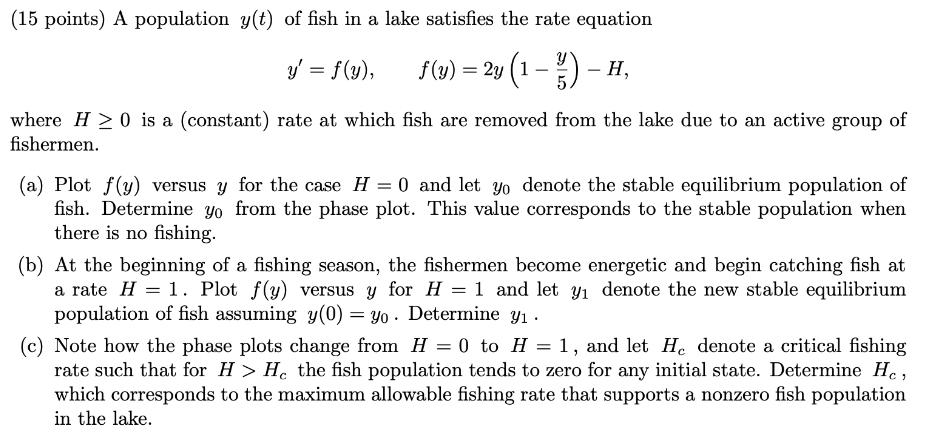Answered step by step
Verified Expert Solution
Question
1 Approved Answer
(15 points) A population y(t) of fish in a lake satisfies the rate equation y' = f(y), f(y) = 2y (1 3) H, -

(15 points) A population y(t) of fish in a lake satisfies the rate equation y' = f(y), f(y) = 2y (1 3) H, - where H20 is a (constant) rate at which fish are removed from the lake due to an active group of fishermen. (a) Plot f(y) versus y for the case H = 0 and let yo denote the stable equilibrium population of fish. Determine yo from the phase plot. This value corresponds to the stable population when there is no fishing. (b) At the beginning of a fishing season, the fishermen become energetic and begin catching fish at a rate H = 1. Plot f(y) versus y for H = 1 and let y denote the new stable equilibrium population of fish assuming y(0) = yo. Determine y. (c) Note how the phase plots change from H = 0 to H = 1, and let Hc denote a critical fishing rate such that for H> He the fish population tends to zero for any initial state. Determine Hc, which corresponds to the maximum allowable fishing rate that supports a nonzero fish population in the lake.
Step by Step Solution
★★★★★
3.38 Rating (151 Votes )
There are 3 Steps involved in it
Step: 1
a Setting H 0 we have fy 2y1 y5 To plot fy versus y we can first find the critical points by setting ...
Get Instant Access to Expert-Tailored Solutions
See step-by-step solutions with expert insights and AI powered tools for academic success
Step: 2

Step: 3

Ace Your Homework with AI
Get the answers you need in no time with our AI-driven, step-by-step assistance
Get Started


